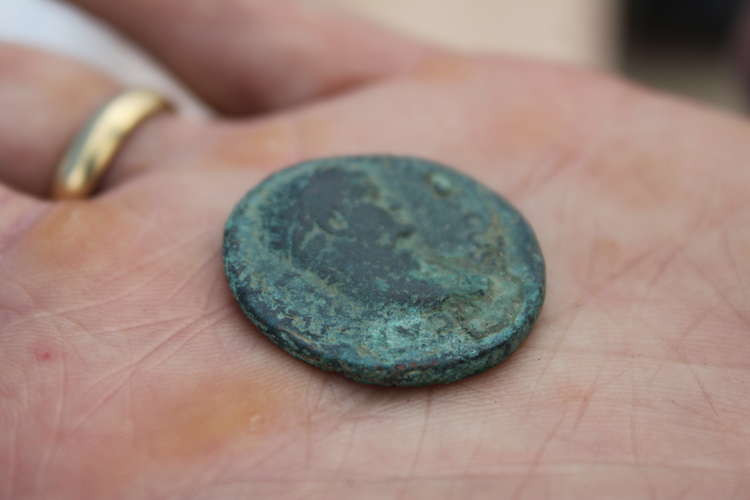Brentford REWIND: Archaeological Excavations at Brentford Lock - the Roman Period
By Isabel Millett 1st May 2022
By Isabel Millett 1st May 2022

In 1996, an archaeological evaluation found evidence of human activity spanning the Prehistoric, Roman, Medieval and Post-Medieval periods, had survived at Brentford Lock.
To record the findings ahead of the redevelopment of a triangle of land between Brentford High Street and the River Brent that would see the archaeological remains destroyed, an excavation was undertaken in spring 2001.
Among the discoveries were pottery fragments on the banks of a former channel of the Brent, one sherd of which had a finger impressed rim, dating the it to the early Iron Age period (700-300 BC). Three rubbish pits dug into the top of the channel fills contained pot sherds and fragments of burnt flints, indicating cooking on the margins of the river by people in an Iron Age settlement nearby.
While sparse else was recovered at the site prior to the Roman Conquest, pottery found in the base of a roadside ditch suggested the major road from Londinium to Silchester was dug between 45 and 70 AD. Its placing along the southern boundary of the site with Brentford High Street puts the northernmost stretch of the Roman road surface directly beneath the modern road.

In the late 1st century, a section of the road to the east at 232-246 High Street was remodelled and widened. Pottery dating to AD 70-100 was found in ditches nearby, including fragments of wheel-turned jars and beakers from the Highgate Wood kilns, the Colne Valley kilns near Staines and elsewhere in the Thames valley.
A Roman military belt mount, two decorative dress pins, a green glass bead, a finger nail cleaner, an ornately moulded knife handle and a small mount cast in the form of a ram were discovered from ditch fills. Many metal objects were also recovered, presumably dropped by travellers on the road.
Abandoned by the end of the fourth century, there was no more activity found at the site until the Medieval period.
Lorraine Darton, the site supervisor on the Brentford Lock excavation, said: "The lack of any evidence of Saxon activity or occupation on either site is difficult to explain."
One possibility, she added, is that Medieval ploughing disturbed any remains. As it stands, it seems the western part of Brentford went out of use by AD 400.
In next week's newsletter: Archaeological Excavations at Brentford Lock: Mediaeval & Post-Mediaeval
CHECK OUT OUR Jobs Section HERE!
brentford vacancies updated hourly!
Click here to see more: brentford jobs
Share:


